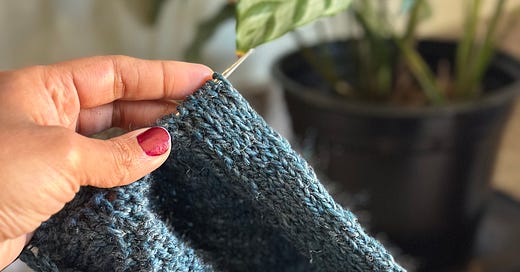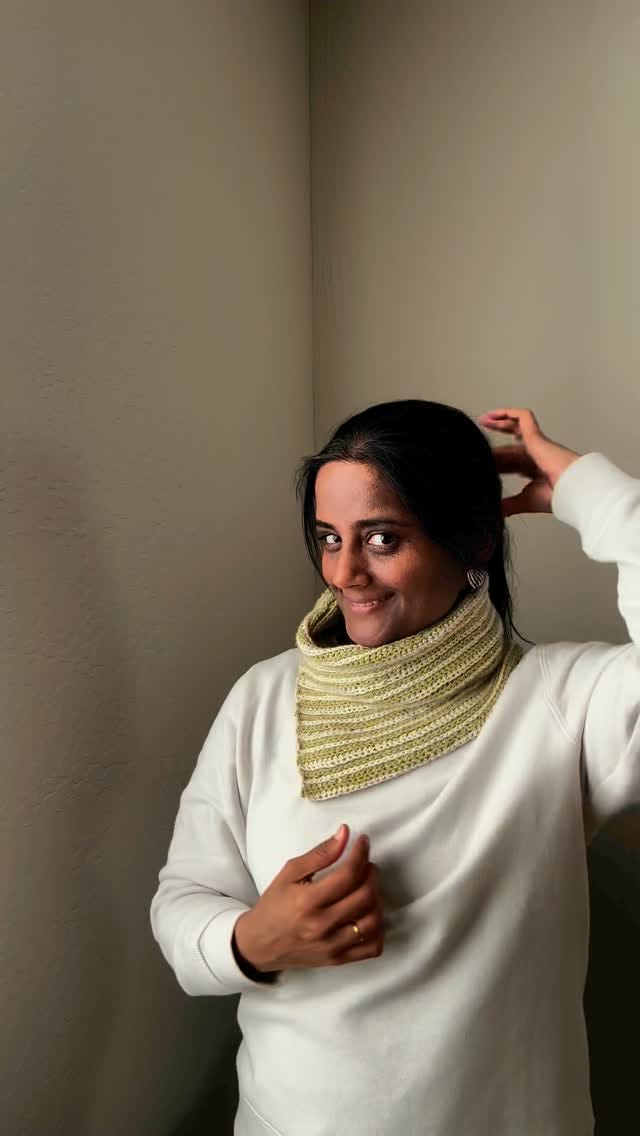Copyrights, Boundaries & Fine Prints
Digital Download Etiquette, CraftDoodling Designs News, etc.
You might have come across recent conversations online about paid knitting patterns being uploaded and made available for free. This is nothing new. But as someone who dedicates countless hours to creating patterns that meet a certain standard and quality, every fresh wave of such news never fails to hurt.
Today, I want to highlight some of the issues surrounding copyrighted digital creations—knitting patterns in particular.
Free Patterns Are Ubiquitous
Traditionally, knitting knowledge was passed down freely within families and among friends. Thanks to the internet, we now have access to a vast number of free knitting patterns.
People offer free patterns for various reasons:
For the love of knitting
To give back to the larger knitting community
Because they do not rely on pattern sales for income
As a small sample to introduce their paid patterns
Large companies are usually able to provide some free patterns along with their yarn—a user manual of sorts for the yarn you purchased!
Free patterns have always had a place in the knitting community, even bringing knitters together to support important causes. However, this ubiquitousness of free patterns can sometimes lead to the misconception that all knitting patterns should be free.
Pattern Writing: Then and Now
If you've ever tried to work from a vintage knitting pattern, you know they can be brief and somewhat cryptic. This brevity likely resulted from widespread knitting knowledge at the time and the limited variety of yarns and needles available. Instructions didn’t need to be highly detailed.
Writing knitting patterns is a dream job of its own kind. I am very grateful to be doing what I LOVE and receive support and encouragement for it. But the job also comes with real deadlines and challenges. Not all parts of the job are glamorous.
Writing instructions, making instructional videos, technical editing, photography, testing, learning new software tools, and marketing all take quite a lot of time, apart from the actual knitting itself.
Even the simplest pattern takes a tremendous amount of work, something I wish more people recognized. I’ve explored this in greater detail in my previous essay - About Simple knitting patterns.
The Ease of Sharing
We live in an era where both beginners and experts can share their creations widely, thanks to the internet and social media. This accessibility is both a blessing and a challenge for digital creators.
Once a pattern is shared online, it can be easily misused. A designer has little control over what happens once a pattern is downloaded.
Software-based protection methods, like passwords and encryption, offer some security, but they cannot prevent someone who is determined to bypass them. Digital copyright laws vary across countries and, unfortunately, do little to stop theft from occurring in the first place.
Digital Download Etiquette
In the absence of laws and means to protect digital creations, much of the responsibility falls on the consumer—the knitter who downloads the pattern.
Here are some things to consider:
If you purchase or receive a digital pattern, (book, music or artwork for that matter) please treat it with respect and care. If you think a friend would also love it, consider purchasing a separate copy for them.
Some designers choose to give away paid patterns for free in hopes of gaining exposure. That does not make it acceptable to distribute those patterns without permission.
If you sell handmade items made from patterns, take time to understand the design you’re using and any associated permissions.
If you are a designer studying another designer’s pattern for learning purposes, that’s fine—but remember that the designer owns their words, numbers, and images.
Have you come across discussions about this topic? Do you have any thoughts or takeaways? I’d love to hear them—please share in the comments!
To let me know you liked what you read, you can also press the little heart icon at the bottom of the newsletter. ♥️ However, if you are clicking it from your inbox, you might have to wait until Substack opens in a browser and make sure the heart icon is indeed red. Thanks! 🥰
CRAFTDOODLING DESIGNS UPDATES
I am currently knitting a second sample of my upcoming design, Mika Vest. My testers are working at their lovely versions of the vest currently.
My latest design, Ceremonial Grade Cowl is a fun crochet pattern, designed for the Bay Area Yarn Crawl make along. You can purchase your copies here if you wish to participate in the MAL. The idea is to wear your cowl while you yarn crawl!
If you are making one or more of the crawl cowl patterns, please consider showing it off online in this Ravelry Group. You can tag @bayareayarncrawl and or the desiginers in your instagram posts as well.
You still can join us in the Make-Along at Fillory Yarn for the Ceremonial Grade Cowl. You will have time to finish your cowl before the crawl.
I made a reel video to show how I style this cowl. :) Hope you find it helpful.
OTHER THINGS YOU MIGHT LIKE
Here are some articles I came across, related to the same topic as my essay today.
Why knitting patterns shouldn't be free
I chatted to AI about where it got it’s data from including knowledge of knitting patterns
READING UPDATES
Finished Reading 📖
A Death in Diamonds - S.J.Bennett
Currently Reading 📖
Invisible Helix - Keigo Higashino
Until next time,
Kavitha. ♡
Currently, this newsletter is free to subscribe. If you like my work, please consider these other ways to support:
Click the ❤️ at the bottom of this post. If you are reading from your email inbox, this will open substack in web browser. Please allow it to open and make sure you see the red heart.
Share your thoughts in comments. I am here for the conversations. I hope you are too!
Introduce this newsletter to a friend!
Buy my patterns. I hope you find something you like.
I accept any of these with immense gratitude. Thank you!






Paying for patterns should be a foundational belief for knitters and crocheters. My husband and I used to own a yarn shop, and we had some free patterns from yarn companies to help sell a particular line of yarn, but we also sold hard copies of patterns. We very strongly discouraged people sharing patterns. Now that we don't own the shop, we make sure to purchase our own patterns. I've written a couple of patterns for myself, and I know the importance of paying pattern writers - Yikes! that's a hard job! A pattern I just purchased was $15 for a 32 page pattern. I haven't started it yet, but it's very complicated, and I imagine I'll be glad for all 32 pages of instructions. All that is to say that, yes, we must pay for our patterns to keep our pattern writers in business and because it is the right thing to do. Keep writing! (Essays and patterns)
I have noticed there has been a recent buzz around this issue, it's true, Kavitha! I've reflected on this paid vs free patterns here on Substack once, and one of the thngs I think it's important to point out, even if it seems quite obvious, is that nobody is entitled to any pattern for free. It's not food, not water, not shelter or any basic right, and as you point out, there are many free knitting or, in my case, crochet patterns to go around. Unfortunately, there's only so much a designer can do against it, but I do think it's worth pointing the problem out and also be grateful for the many people that do appreciate all the work involved and are willing to support it in any way, and even jumping in to defend a designer's work.
PS: About vintage patterns, I recently listened to an episode from The Long Thread podcast where the interviewee mentioned that one of the challenges with old written patterns had a lot to do with there being no standardization and with variations in terminology, where even the needles had different names depending on a country's region (he mentioned a funny example: "pricks" for knitting needles... 🤣).